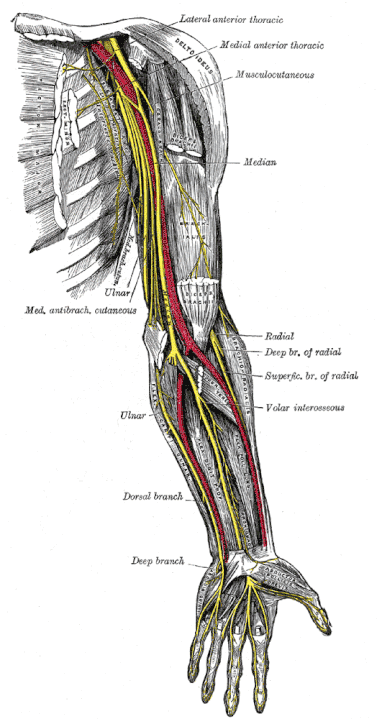
What causes pins and needles? Pins and needles are caused because the flow of blood to your nerves is restored.
Pins and needles are really called paresthesia. The word comes from the Greek para, which means “abnormal” and aesthesia, which means “sensation”. They come after one of your limbs has fallen asleep, which is actually called obdormition. That word comes from the Latin obdormire, which means “to fall asleep”.
Pins and needles is the feeling that you are being pricked with hundreds of pins and needles, hence its name. In healthy people, it comes after obdormition, which is when one of your limbs goes numb. This usually happens after a long period of lack of movement.
I always thought pins and needles was caused because your lack of movement had stopped the blood supply to your limbs and when you moved the blood supply started again. This is not completely true. It happens because your lack of movement has stopped the blood supply to the nerves.
Let’s take an example. When you sit on the toilet reading my posts for an hour, the edge of the toilet seat presses against the blood vessels and the nerves in the back of your legs. You probably hunch over as well, which compresses them even more.
Your nerves need a constant supply of oxygen in order to be able to send electrical signals to the brain. Oxygen is the fuel that nerves use to fire the signals. Major nerves are always near to a large artery and your body can shunt blood from one area to another if nerves in that area need more oxygen.
Nerves are very long single cells. Some of them can be a meter long. They send signals by making an electrical difference that is transferred along the cell before being passed to the next cell. They can send signals at a speed of 50 meters per second, which means you can react in milliseconds.
Nerves have an extremely high energy demand, and they need more blood per gram of tissue than anything else in our bodies. From the blood, they take oxygen and glucose. They convert the glucose into energy using the oxygen and then they use this energy to send signals along the nervous system.
When you are sitting on the toilet, you compress the blood vessels in your legs and stop the blood supply to the nerves. The nerves can no longer send signals to your brain, which means you no longer feel anything in your leg. Namely, you are numb. Your limb has fallen asleep.
When you stand up, the blood flow to the nerve is instantly restored. The nerves basically reboot and all of the signals that had been trapped are fired at once. This firing of nerves is the feeling that we call pins and needles. Moving around or jumping up and down helps restore the blood flow and the nerves to normal.
Usually, pins and needles gets better after a few minutes. However, some forms of nerve damage can cause constant pins and needles. If the pins and needles don’t go away, it is called chronic paresthesia. It can be caused by serious nerve damage.
There is another sensation that is similar to pins and needles that is called formication. This is the feeling that insects are crawling on the skin when there is nothing there. The word comes from the Latin formica, which means “ant”. Formication is commonly caused by drug or alcohol withdrawal. Your brain is constantly dealing with signals from your skin, which are called tactile signals. Withdrawal from stimulants, such as cocaine and amphetamines are often a cause. An imbalance of dopamine is thought to be one of the reasons. They are so common with drug use that they are sometimes known as “cocaine bugs” or “meth mites”. Formication can be caused by the nerves in the skin randomly triggering, but it can also just be a hallucination. This makes it very difficult to treat.
So, pins and needles is caused because a lack of movement or an uncomfortable position traps the blood supply to the nerves. When we move, the blood supply to the nerves is restored and the nerves all fire at once, giving the pins and needles feeling. And this is what I learned today.
